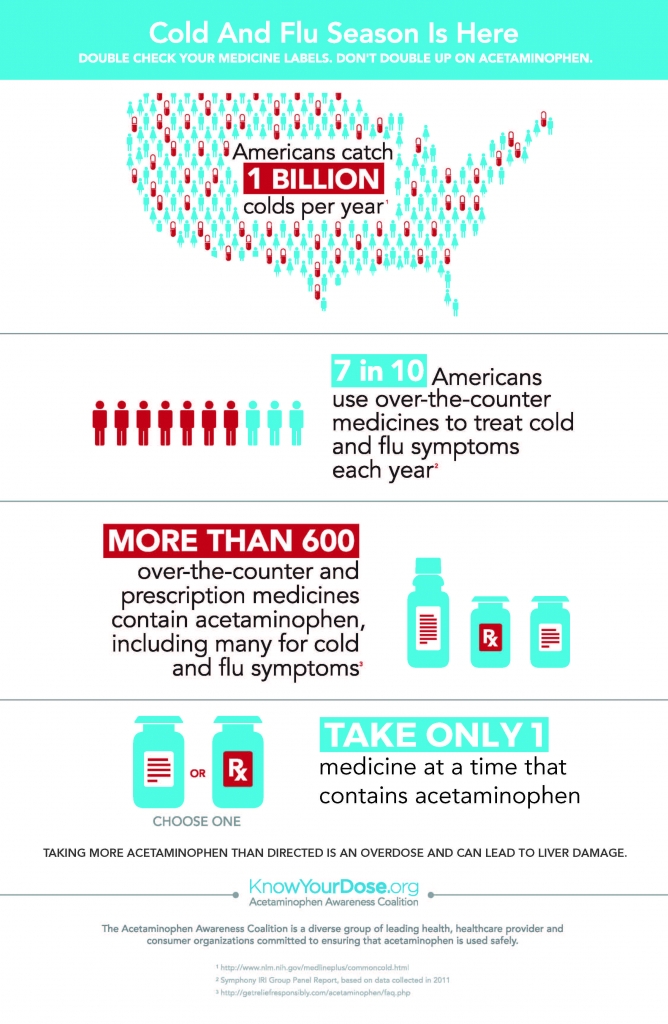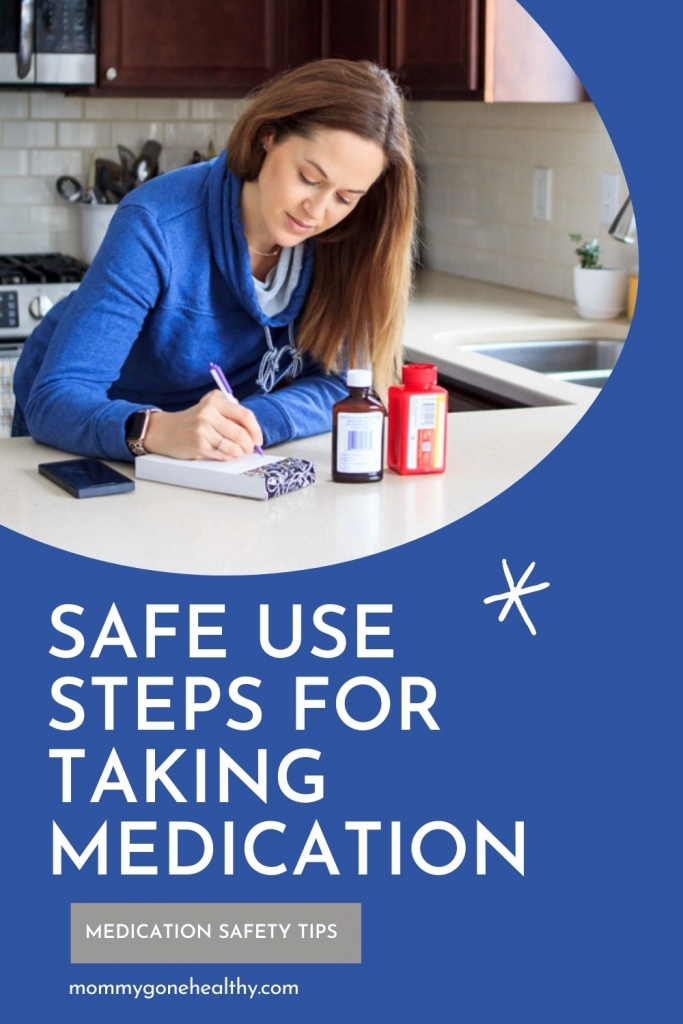This post is brought to you by Know Your Dose and The Motherhood. All opinions are my own.
Throughout my college and early motherhood years, I worked in pharmacy, both in retail and as an in-patient pharmacy technician. As a pharmacy technician, I worked often with the general public and one of the consistent issues and questions that we encountered was taking medications safely. In particular, being mindful and careful about the risk of taking too much acetaminophen. Accidentally taking too much acetaminophen could lead to liver damage so being mindful to take it correctly is incredibly important.

With cold and flu spreading, along with the virus that causes COVID-19, it’s even more important this year to take steps to ensure that acetaminophen is being safely used when treating cold and flu such as fever and headaches. Acetaminophen is a very common drug ingredients that is used in many multi-symptom cold and flu medications to treat upper respiratory cold and flu symptoms. Acetaminophen can be found in both OTC (over the counter) and prescription pain medications. While acetaminophen is safe and effective in treating fever and pain, it’s incredibly important to use as directed in order to avoid adverse effects (like liver damage). According to the U.S. Food And Drug Administration (FDA) , the maximum daily dose of acetaminophen is 4,000 mg in a 24-hour period for adults.

The Acetaminophen Awareness Coalition (AAC) is urging Americans to double check their medicine labels when treating cold and flu symptoms to avoid doubling up on medicines with acetaminophen. During cold and flu season, the odds of taking more than the maximum dose of acetaminophen in one day can increase up to 24% during cold and flu season. Each week, more than 50 million Americans use a medicine that contains acetaminophen—a drug ingredient found in more than 600 different over-the-counter and prescription medicine. With so many medications containing acetaminophen it’s incredibly important to be mindful of what ingredients are in your medication. Recent data shows that the 60+ population is at a greater risk of accidentally taking too much acetaminophen, often because they are more likely to take multiple medications and may not realize that acetaminophen is in multiple medication. Taking a moment to double check medications and read labels thoroughly is one of the easiest ways to avoid taking too much acetaminophen.

Below are several tips and steps to take to make sure that you and your family are using medications with acetaminophen safely.
Safe Use Steps For Taking Medication
1. Always read and follow the label.

Check the labels of every medication you are taking. This is incredibly important to make sure that they are taken correctly, to be aware of all active ingredients and to be mindful of potential interactions or side effects.
2. Know if your medications contain acetaminophen.

Always check under the active ingredients of over-the-counter (OTC) medications to see if acetaminophen is listed. On prescription medications, acetaminophen may be listed or abbreviated as “APAP” or “ACETAM.” and in combination with other medications.
3. Use only one medication at a time that contains acetaminophen.

You can unintentionally take more acetaminophen than recommended if you take more than one medication that contains acetaminophen at a time. Best practices is to only use one medication that contains acetaminophen to avoid potential overdose.
4. Use correct dosing devices to measure medications.
When you or your child is suffering with a cold or flu and you are using an OTC medication, make sure you always use the dosing device that comes with the medicine or from a pharmacy. Flatware spoons are not accurate and you may accidentally take too much or too little medication using them.
5. Ask your doctor or pharmacist if you have questions or are unsure.
If you’re ever unsure on how to dose or take your medications, reach out to your doctor or pharmacist.
6. Write down when you take medications.

Of those who exceed the maximum daily dose, most do so by taking the next dose too soon, using multiple products containing acetaminophen, or taking too much at one time. Writing down the times that you take medication is a great way to keep track to ensure that you don’t accidentally take a dose too soon or too often.

Medical Disclaimer: This content is not intended to be a substitute for professional medical advice, diagnosis, or treatment. Always seek the advice of your physician or other qualified health provider with any questions you may have regarding a medical condition. Never disregard professional medical advice or delay in seeking it because of something you have read on this website.



This is really important info to share. I don’t think most people really pay attention to how much medication they are taking and how they may interact with each other
So important to keep in mind. I always want to be safe with my meds. I make sure to take them correctly!
Very valuable information! I didn’t know about the abbreviations that mean acetaminophen. I know my eldery parents struggle with knowing what medications they take and for what. Now they are in a nursing home, but my mom struggled with this years before they moved there.
So many people do! The abbreviations aren’t always the most clear and it’s so important to be vigilant on what you take! I wish more pharmacists & doctors would explain this to their patients too.
These are great tips and a reminder to pay more attention to the details on any medication you are taking!
So important!